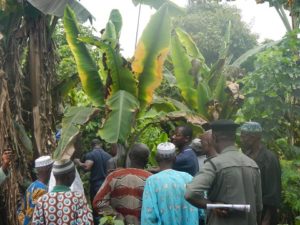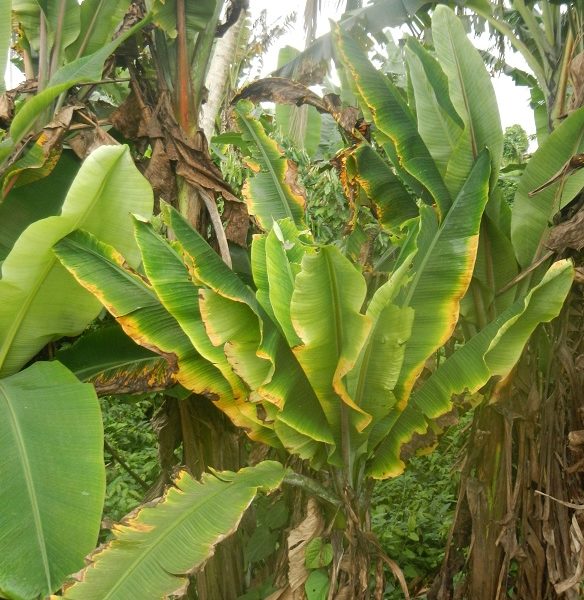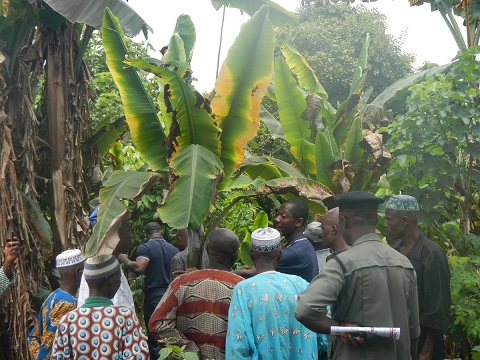Banana Bunchy Top Disease (BBTD) of plantains and bananas is caused by a destructive virus which is very difficult to eradicate. While it has already been detected in at least 14 African countries, its impact in the affected regions is drastic: diseased plants are severely stunted and do not produce fruits. “BBTD has the potential to thwart smallholder banana production and to threaten food security for millions of people in Sub-Saharan Africa”, warns IITA virologist Lava Kumar. Scientists discovered the disease in 2012 In Nigeria, Africa’s second largest plantain producer in terms of area, and the virus has already infected several regions.
 The disease is spread by an aphid (Pentalonia nigronervosa) and by propagation of infected planting materials (corms, suckers and uncertified tissue culture plants). The disease is initially hard to detect and BBTD-resistant plantains or bananas are yet to be identified, which makes prevention the best option for controlling the disease. “It is necessary to strictly avoid importing planting materials from regions where BBTD is known to occur”, explains Kumar, “and we recommend the use of healthy materials and of tissue-culture bananas wherever available”.
The disease is spread by an aphid (Pentalonia nigronervosa) and by propagation of infected planting materials (corms, suckers and uncertified tissue culture plants). The disease is initially hard to detect and BBTD-resistant plantains or bananas are yet to be identified, which makes prevention the best option for controlling the disease. “It is necessary to strictly avoid importing planting materials from regions where BBTD is known to occur”, explains Kumar, “and we recommend the use of healthy materials and of tissue-culture bananas wherever available”.
Two RTB participating centers, Bioversity International and IITA, are collaborating on research and the organization of a global multidisciplinary alliance to control the propagation of the disease. Earlier this year, they organized a workshop on BBTD in Arusha, Tanzania to formalize the Global Alliance for BBTD Control in Africa with public and private partners with the aim to improve surveillance, raise awareness of the threat, and devise and promote strategies to help farmers avoid and manage the disease. Read the full report
To learn more on bunchy top disease, see the dedicated page on Musapedia.
Contact email: L.kumar@cgiar.org

